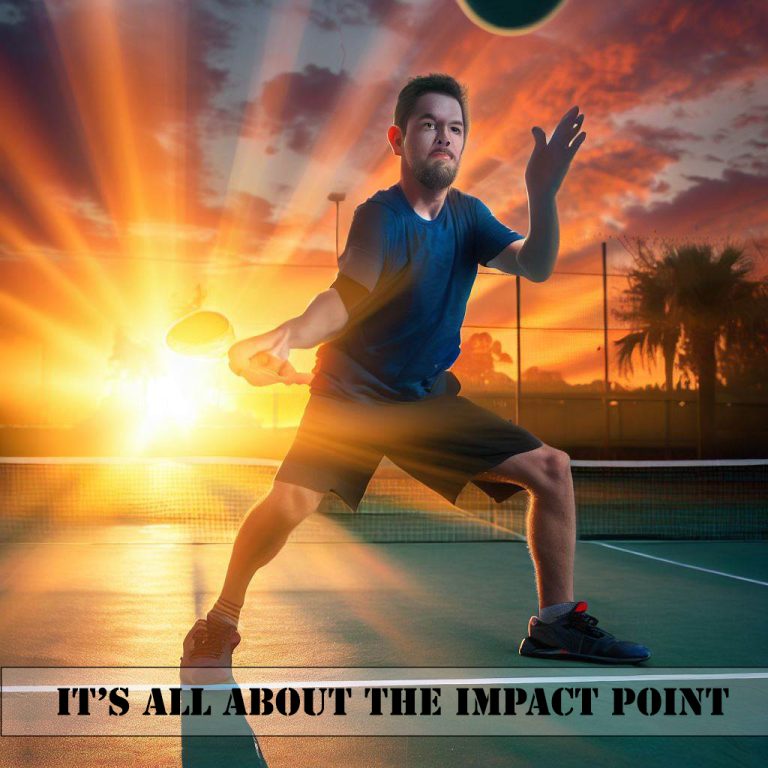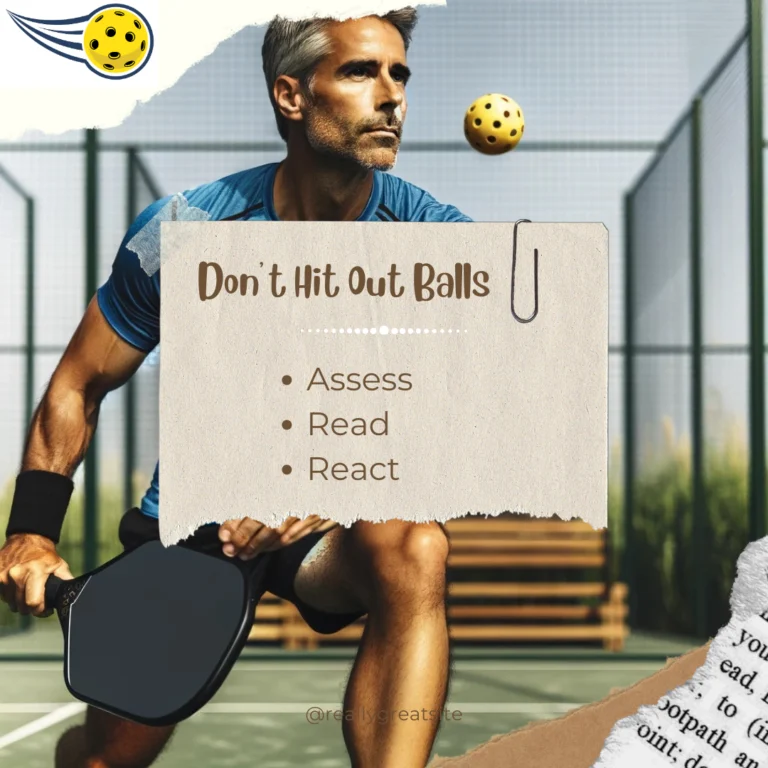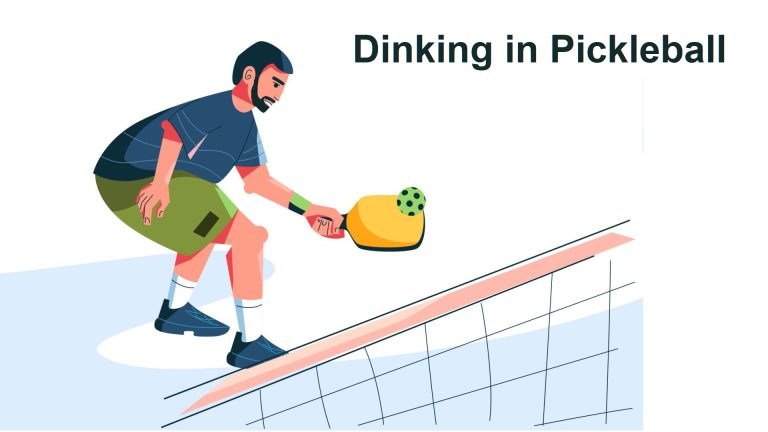Stacking in Pickleball – How To
What It Is, How to Do It, and When to Use It
Are you curious about stacking in pickleball? If so, you’ve come to the right place. This article will provide you with all the information you need to know about this doubles strategy, including:
- What it is
- How to do it
- When to use it.
What is Stacking in Pickleball?
In stacking, both players on a team line up on the same side of the court before a serve or return. After the ball is hit, each player shifts to their desired side. This formation enhances mobility and allows you to control your position on the court. Stacking is a popular strategy among experienced players. It can be used to take advantage of players’ strengths and weaknesses.
Pickleball Stacking Rules
Believe it or not, there are no current rules that prevent players from standing on whichever side they want.However, other rules usually determine where players should stand. When considering stacking, here are the rules you should know:
- A specific player must hit the serve
- A specific player must hit the return of the serve
- A server cannot have any foot on or inside the line when they serve the ball
- The ball must bounce before it is returned from the serve, and on the third shot
- After that, players can move to whichever position they want to play from.
How to Stack in Pickleball
Before we get into when to stack or its benefits, let’s first discuss how to stack. Traditionally, in doubles pickleball (and tennis), one player from each team stands on either side of the centerline. The right side is called the deuce side, and the left side is called the ad side. During the point, players frequently remain on their starting side. Most of us play in that way, most of the time.
But, stacking causes that to change. Stacking means both players are either on the ad side or the deuce side, at least until the serve and return of serve happen. Once players get to their desired side, then it looks like more traditional play.
How to Stack on the Serve
When stacking on the serve, you’ll typically see both players standing on the serving side. For even points, they’ll be on the right side (the deuce side). For odd points, they’ll be on the left side (the ad side). This doesn’t mean they are just hanging out in the same square. Typically, the non-serving player stands just out of bounds, close to the baseline. Once the serve is hit, the players begin to rotate into whichever position they agreed to play from to prepare for their third shot. Sometimes, teams decide that the serving player is responsible for the third shot. They will hesitate a little longer before rotating to their positions.
How to Stack on the Return of Serve
Stacking on the return of serve is similar. However, this time, the player not responsible for returning the serve is standing out of bounds, close to the kitchen line. As their teammate returns the serve, the two players rotate to their desired positions.
When to Stack in Pickleball
Stacking is an effective strategy for utilizing player strengths and minimizing weaknesses in doubles play. The two players should communicate well and plan ahead of time before using this strategy.
The following are some scenarios when you might want to stack:
Maximizing Strengths: One player might have a dominant forehand or backhand. Stacking can be used to keep that player in a position where their dominant shot is next to the centerline. This allows the player to take advantage of poaching opportunities and hit winners more effectively.
- Overcoming Weaknesses: If one player has a weak backhand, they can be positioned on the non-stacking side, where they will have fewer opportunities to use their backhand. This can help the team overcome their weakness and play to their strengths.
- Mobility: If one player is more agile and can cover the court more effectively, they can be positioned on the stacking side. This can help them to cover more overheads than a less agile player, making it harder for the opponents to hit winners.
- Keep Both Forehands in the Middle: If one player is left-handed, stacking can be used to keep both forehands in the middle, making it harder for the opponents to hit winners down the line.
Disadvantages of Stacking in Pickleball
While stacking can be an effective strategy, However, players should also consider its disadvantages before using it. The following are some potential drawbacks of stacking:
- Less Court Coverage: When stacking, players will occupy a smaller area of the court, which can make it harder to cover all areas of the court effectively. This can be especially true if one player is less mobile or covers less ground.
- Less Variety: Stacking can limit the team’s ability to use different shots and strategies, as both players will be in similar positions throughout the point. This can make it easier for opponents to anticipate shots and respond accordingly.
- Communication: Stacking requires good communication between both players to ensure that they are both in the right position and ready for each shot. If there is a breakdown in communication, it can lead to mistakes and lost points.
Is Stacking Legal in Pickleball?
Yes, stacking is legal in pickleball, and there are no rules that prevent players from standing on whichever side they want. However, players must follow other rules such as serving and returning the serve correctly, and hitting the ball within the boundaries of the court.
What is the Proper Way to Stack in Pickleball?
To stack in pickleball properly, both players should stand on the same side of the court before the serve or return of serve, and then position themselves on their preferred side of the court. Once the ball is hit, each player shifts to their desired side. Players should communicate well, plan ahead, and ensure that they are in the right position for each shot.
Can You Switch Sides with Your Partner in Pickleball?
Yes, players can switch sides with their partner in pickleball during a point if they wish. However, doing so too often is not advisable, as it can confuse players and interrupt the game’s flow. It is also important to note that players must switch sides during the transition zone between the kitchen and the non-volley zone. This transition zone is the area where players are not allowed to volley the ball and must allow the ball to bounce before hitting it.
FAQs on Stacking in Pickleball
Here are some questions that people frequently ask about stacking in pickleball:
Is stacking legal in pickleball?
Yes, stacking is legal in pickleball. There are no rules that prevent players from standing on the same side of the court during a point. However, players must follow the other rules of the game, such as hitting the serve and return of serve in the correct order.
What is the proper way to stack in pickleball?
The proper way to stack in pickleball is to have both players on the same side of the court before the serve or return of serve, and then move to their preferred sides after the ball is hit. Typically, the non-serving player stands just out of bounds, close to the baseline, while the serving player hits the serve. After the serve is hit, the players begin to rotate into whichever position they agreed to play from to prepare for their third shot.
What are the disadvantages of stacking in pickleball?
One disadvantage of stacking in pickleball is that it can limit the players’ ability to cover the entire court. By stacking on one side of the court, players may leave the other side of the court open. This makes it easier for their opponents to hit the ball to that side. Additionally, if players are not careful, they can become predictable and allow their opponents to anticipate their shots.
How can stacking help in pickleball?
Stacking can help in pickleball by allowing players to maximize their strengths and minimize their weaknesses. For example, if one player on a team has a dominant forehand, then they may want to keep that player in a position to where their forehand is always next to the centerline. This allows the player to take forehand poaching opportunities. Stacking can also be used to overcome player weaknesses, such as a poor backhand, and maximize mobility.
Stacking in pickleball is a doubles strategy that can help players maximize their strengths and overcome their weaknesses. By lining up on the same side of the court before the serve or return of serve, players can improve their mobility and control where they stand on the court. Stacking is legal in pickleball, but players must follow the other rules of the game. Such as hitting the serve and return of serve in the correct order. Players of all levels can benefit from stacking, but they should communicate well with their partner and understand its potential drawbacks. With practice and good communication, players can use stacking to gain a competitive advantage in pickleball.








2 Comments